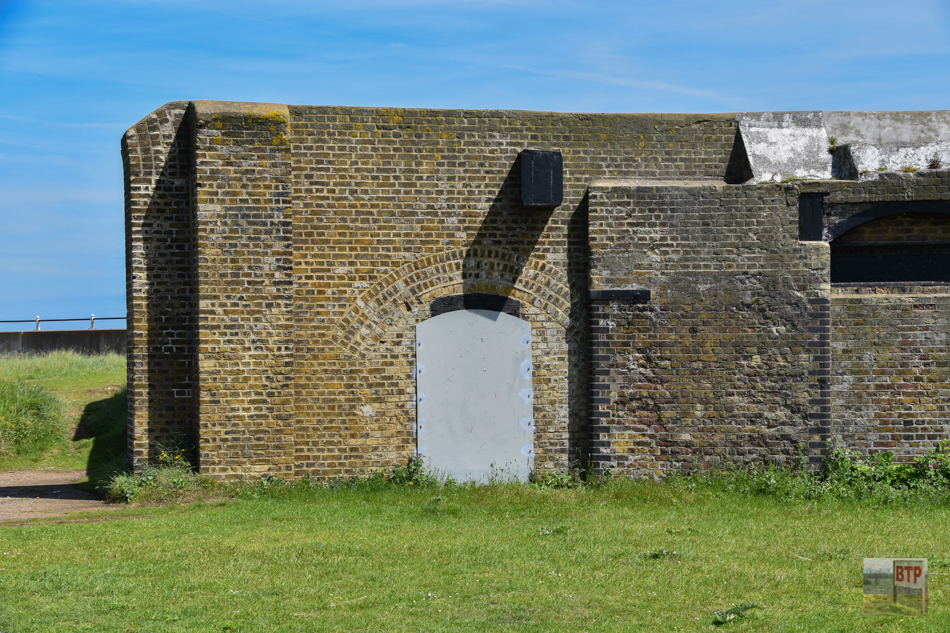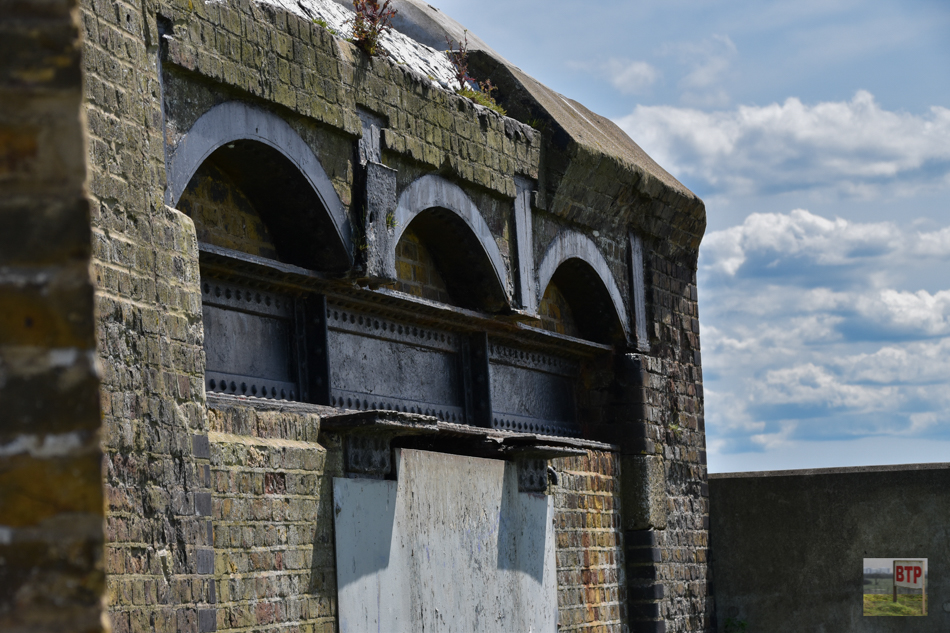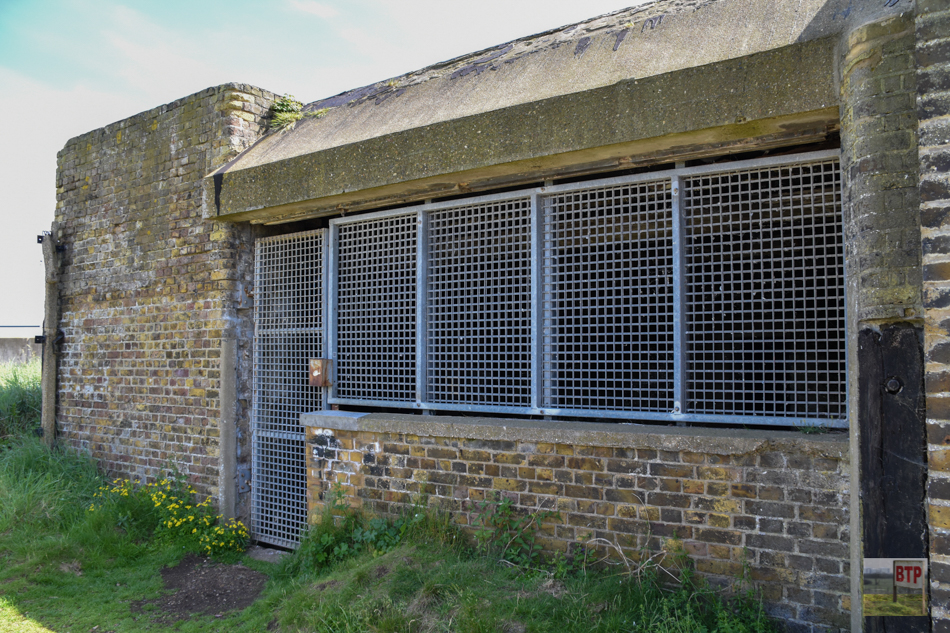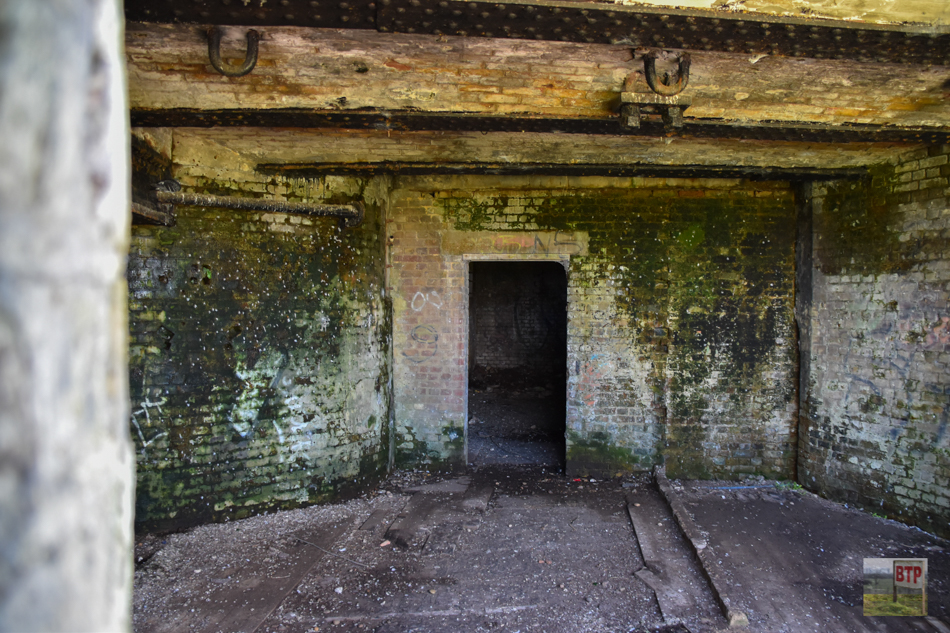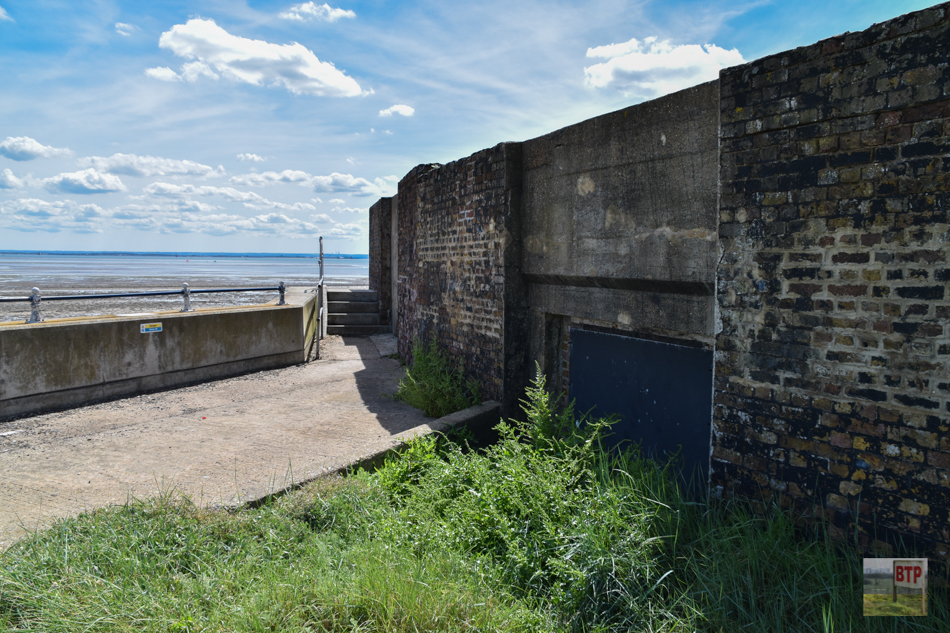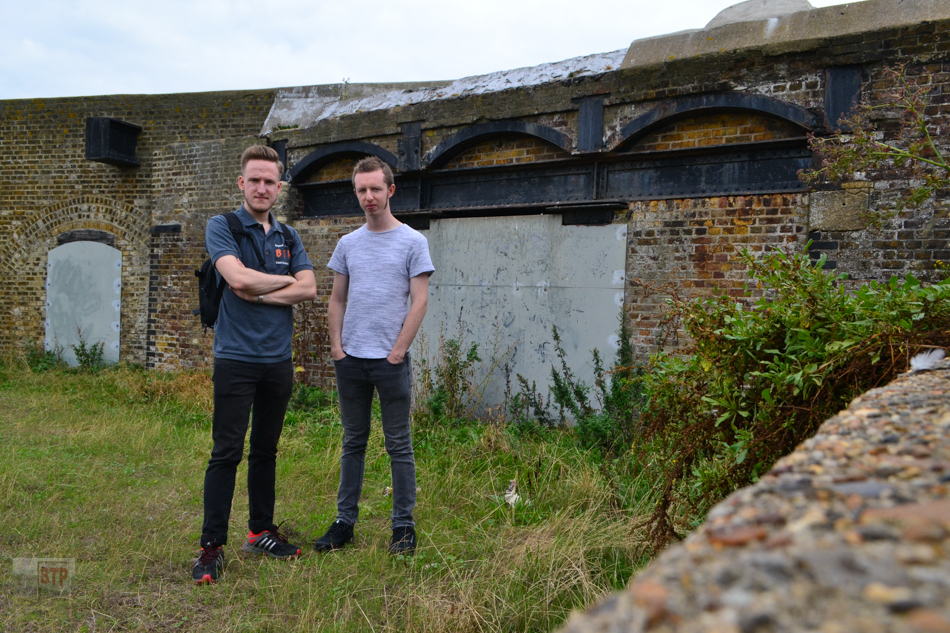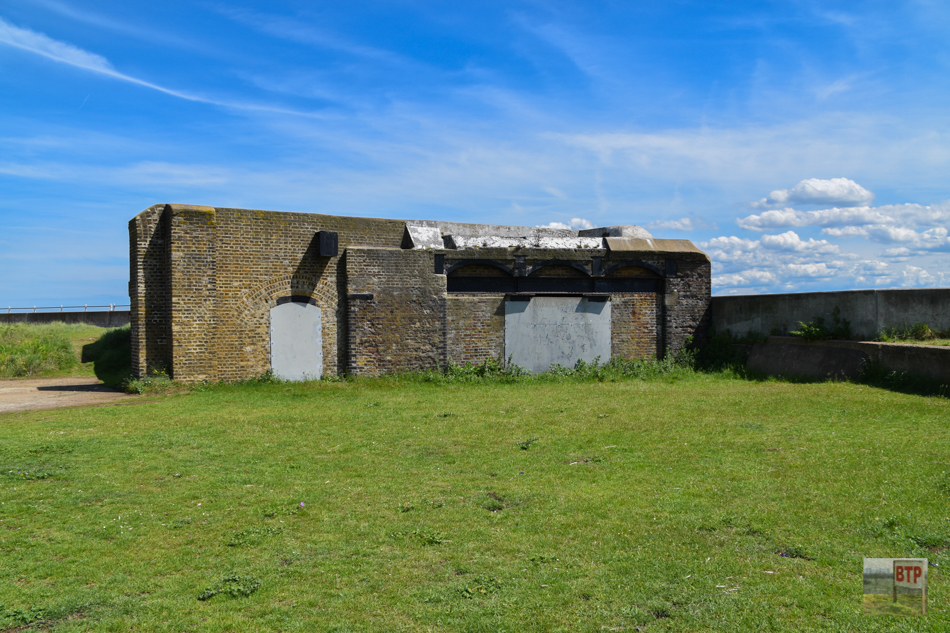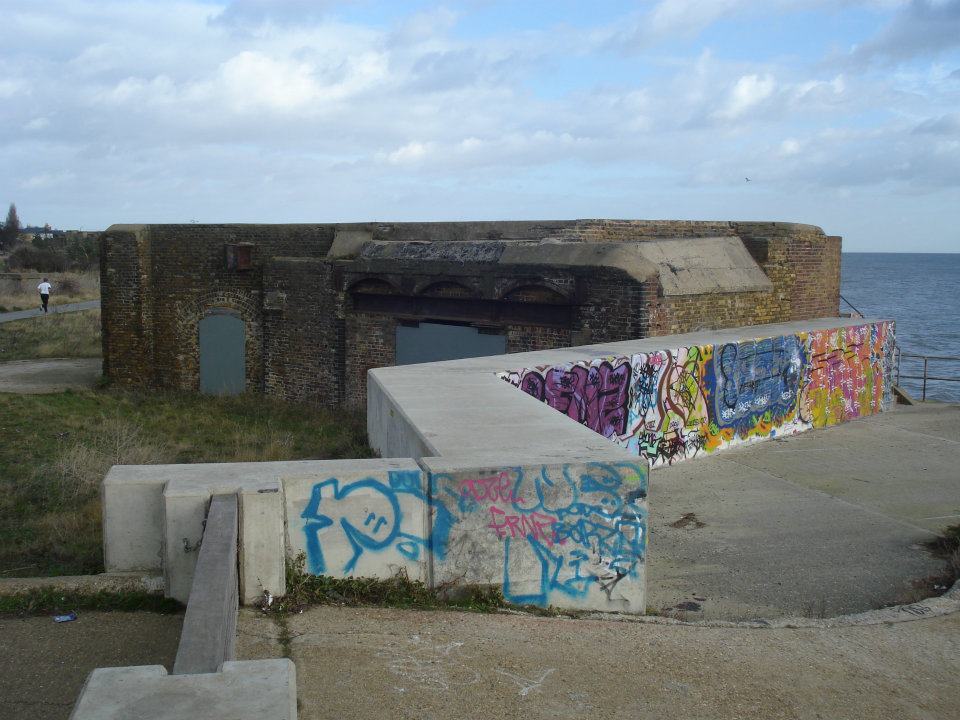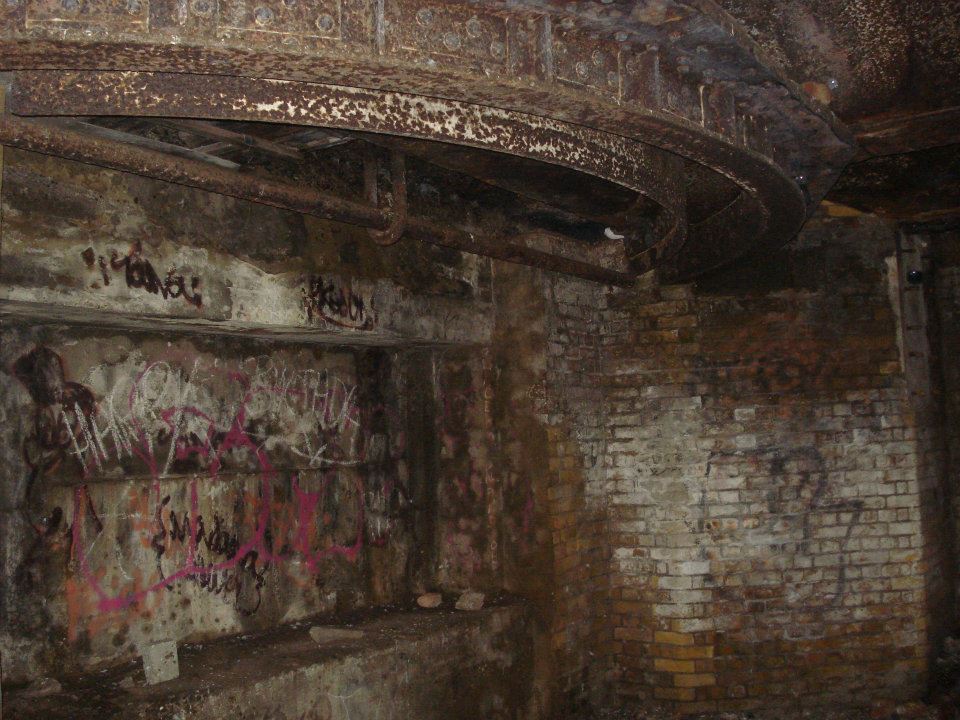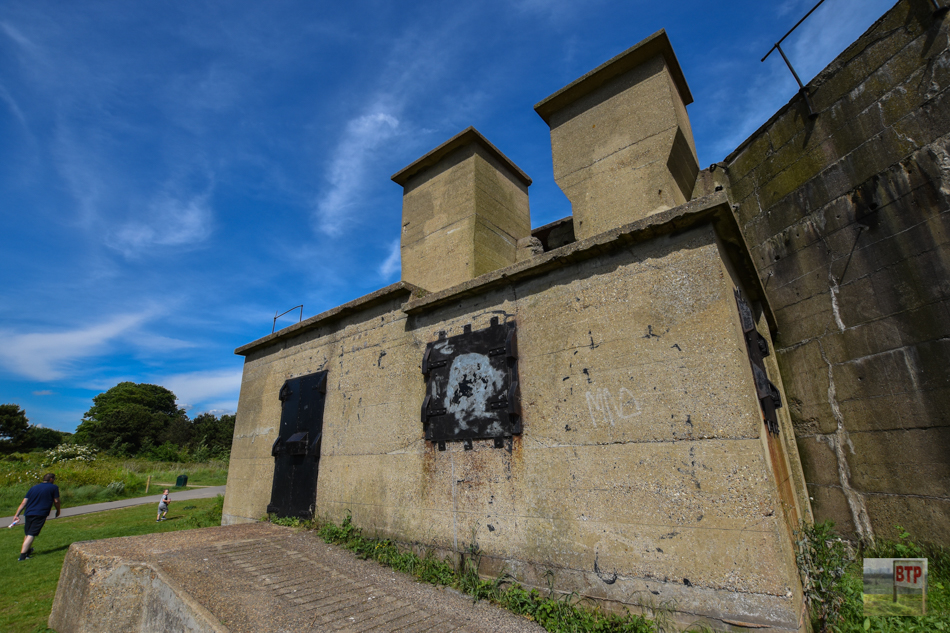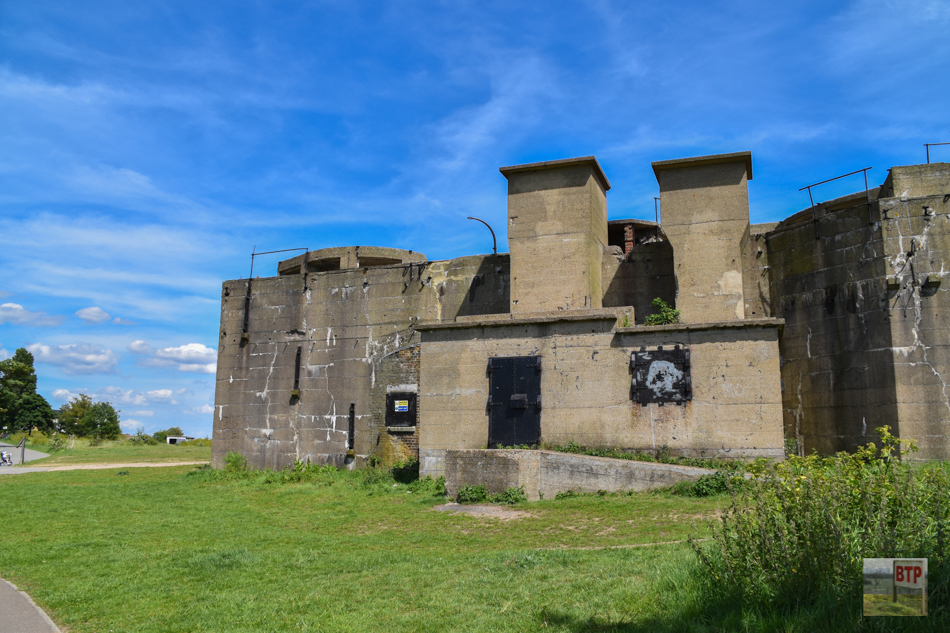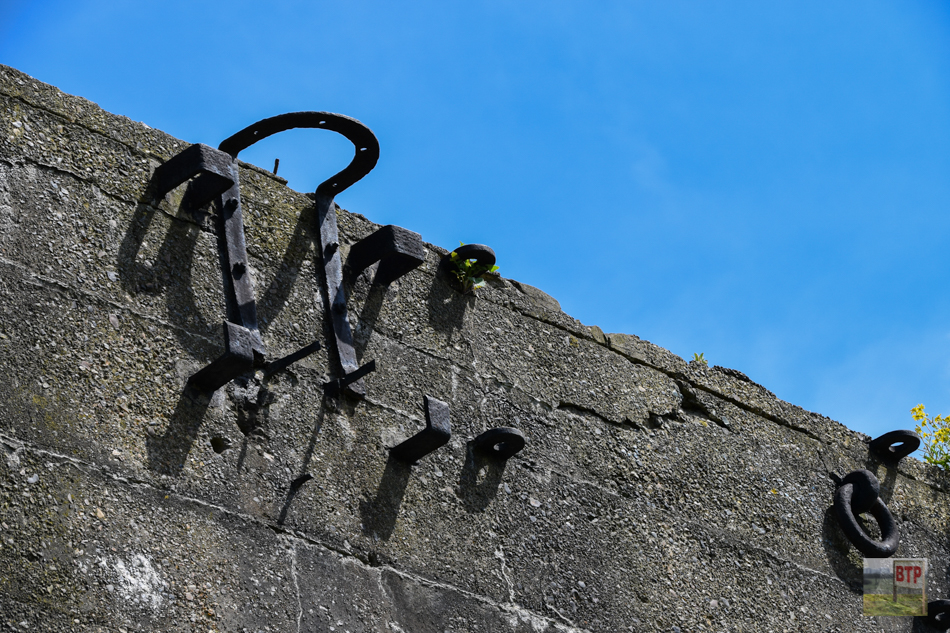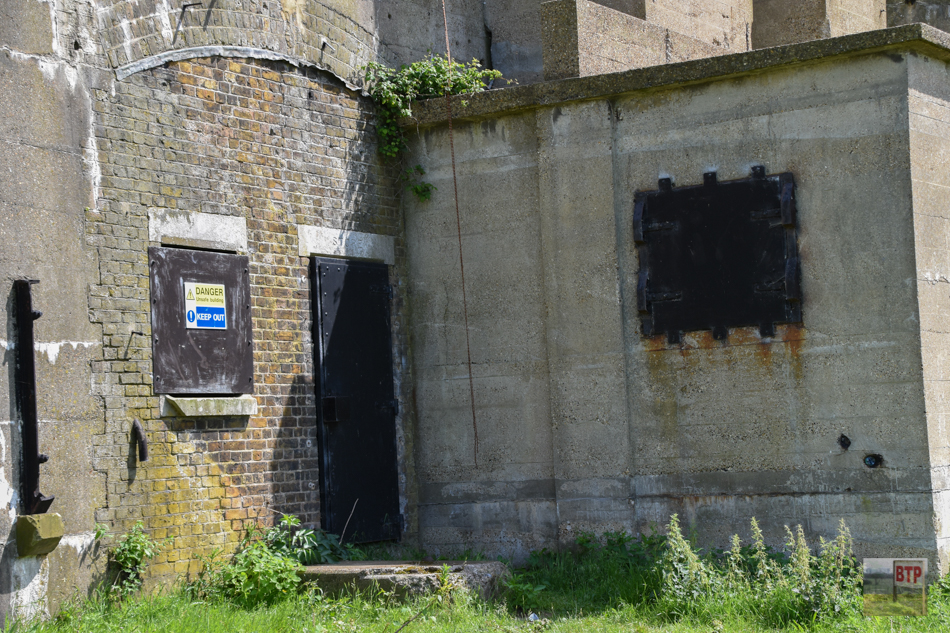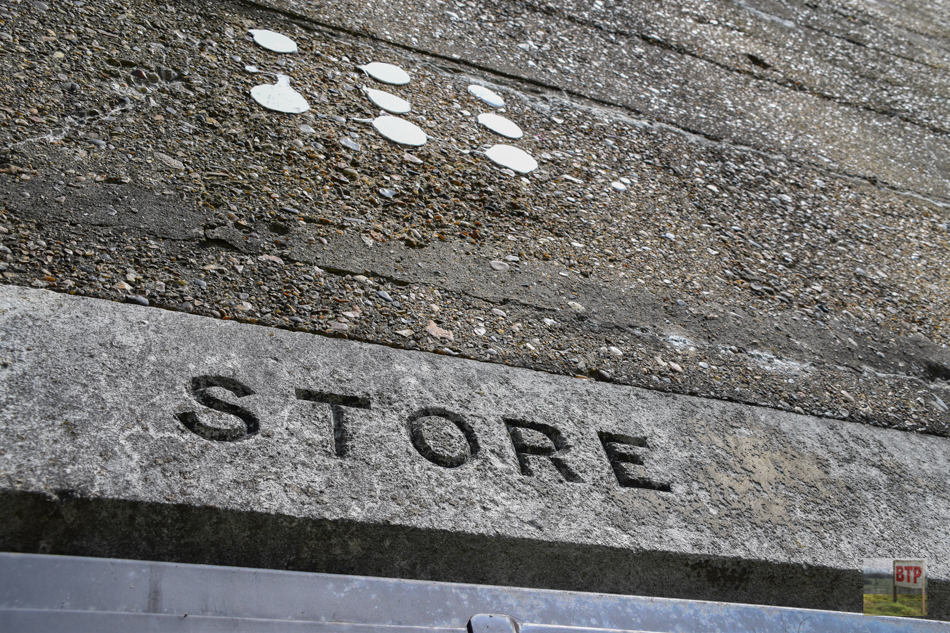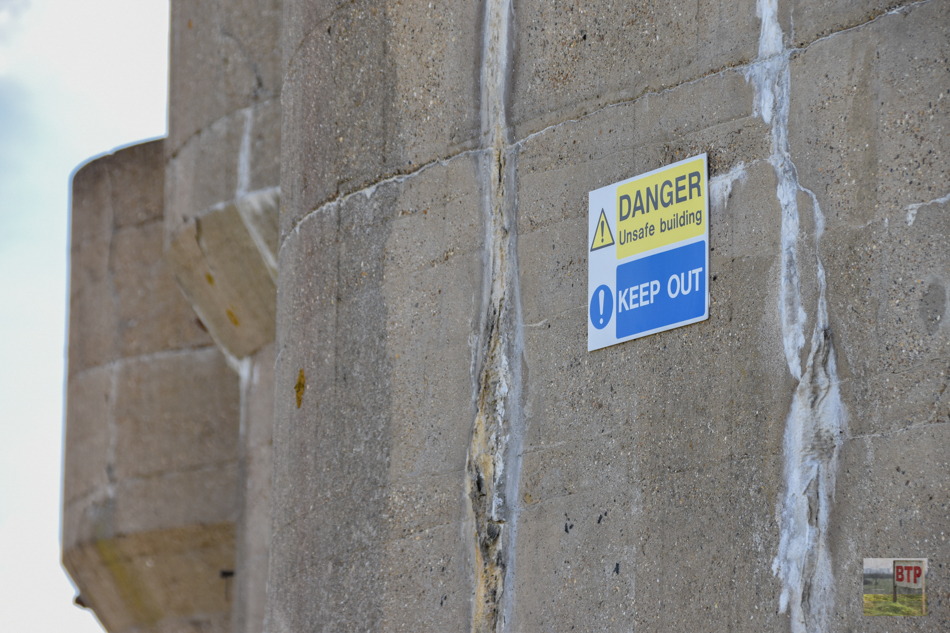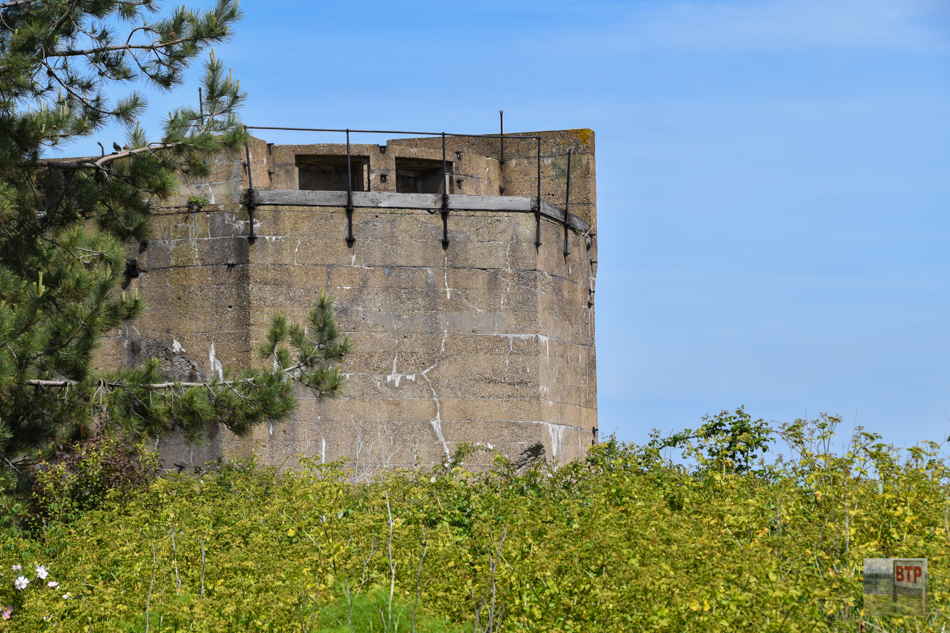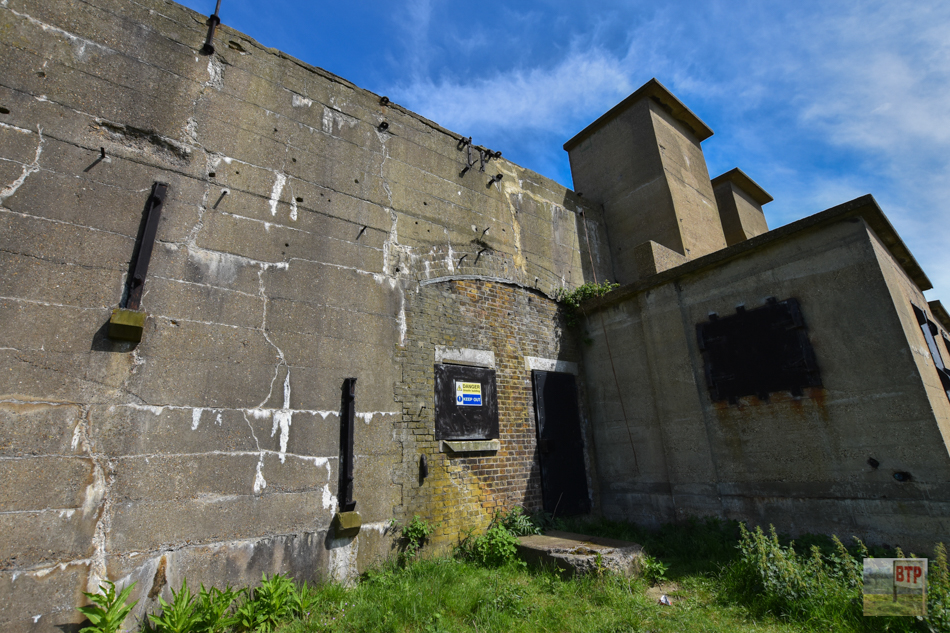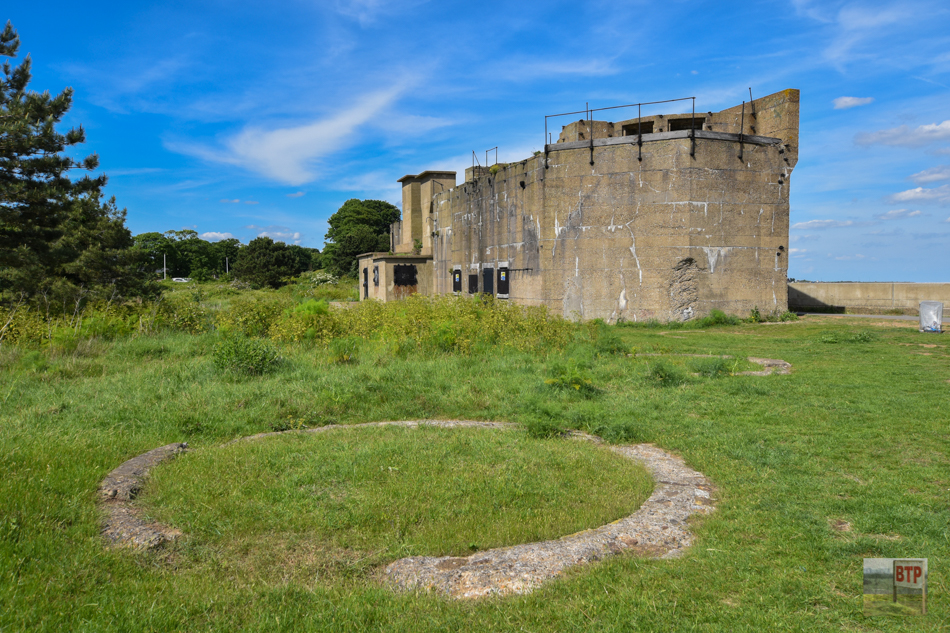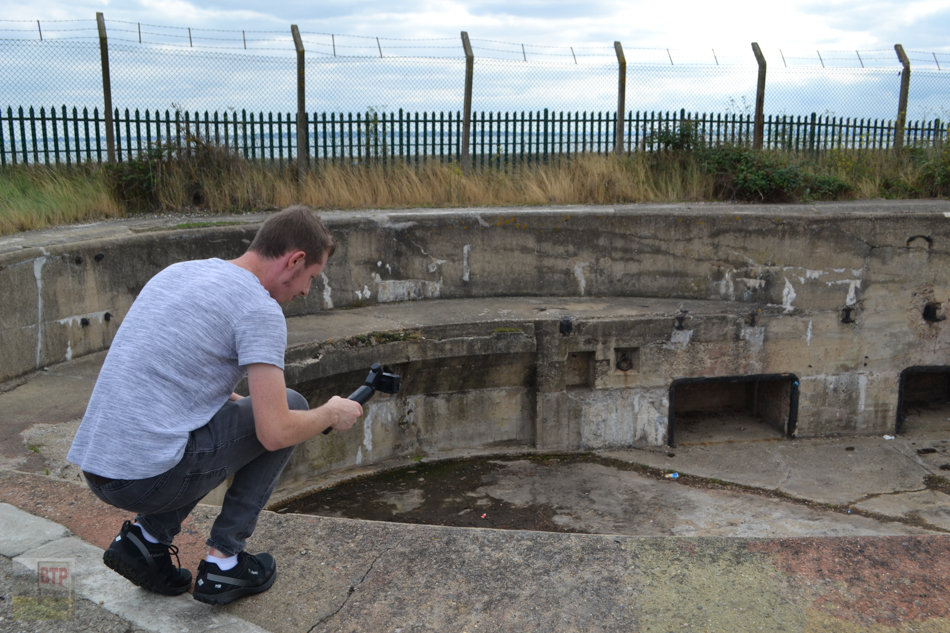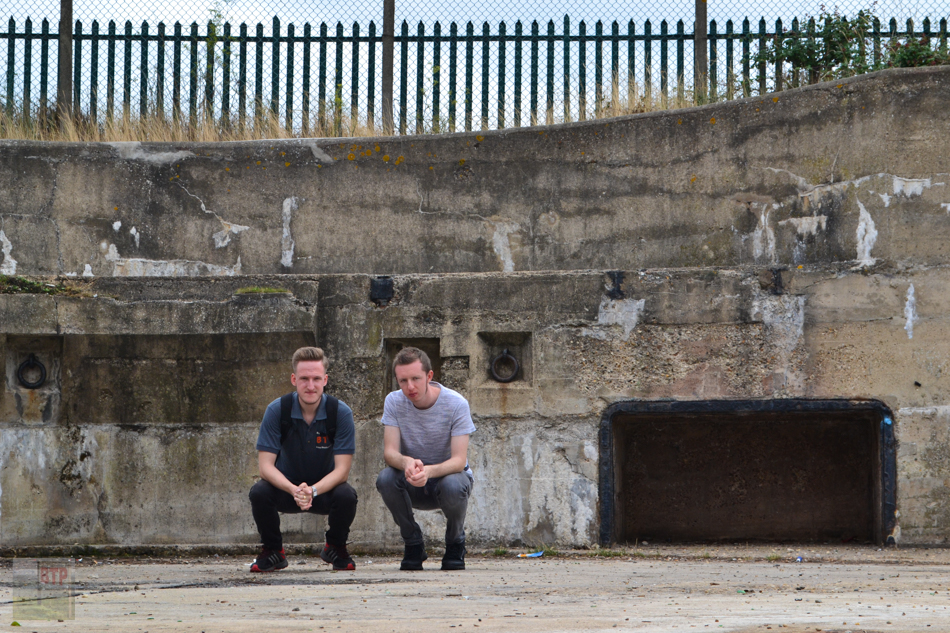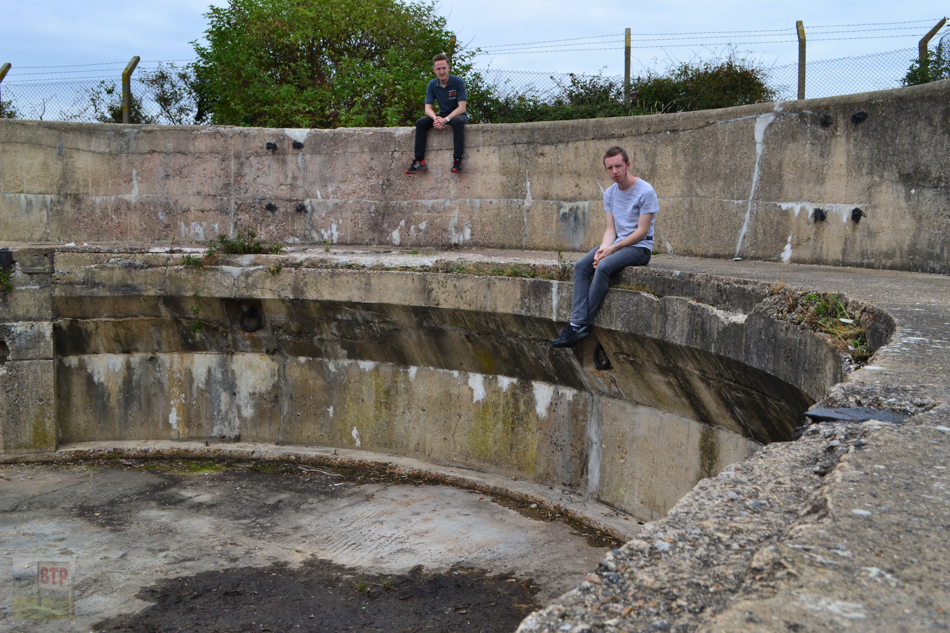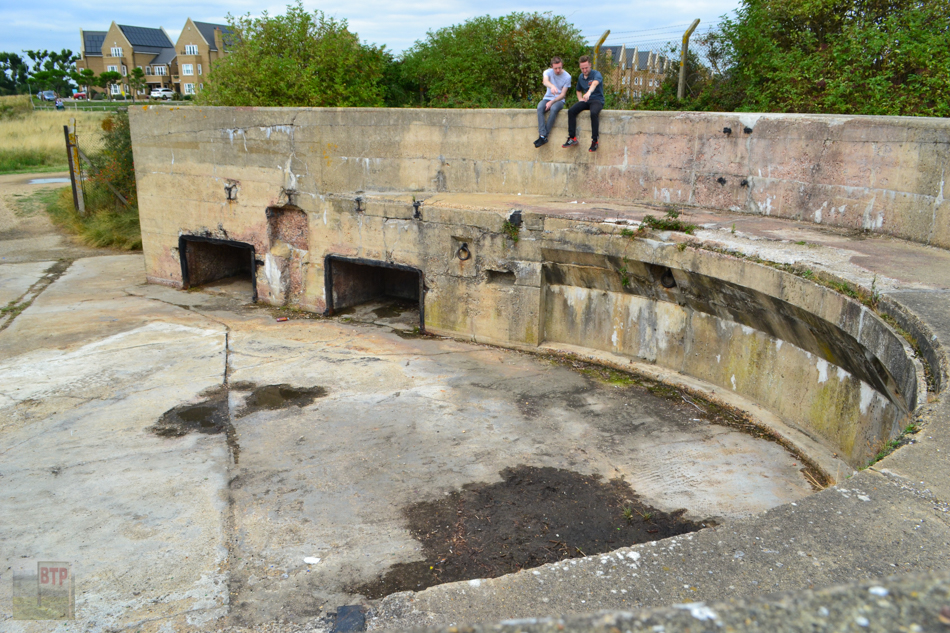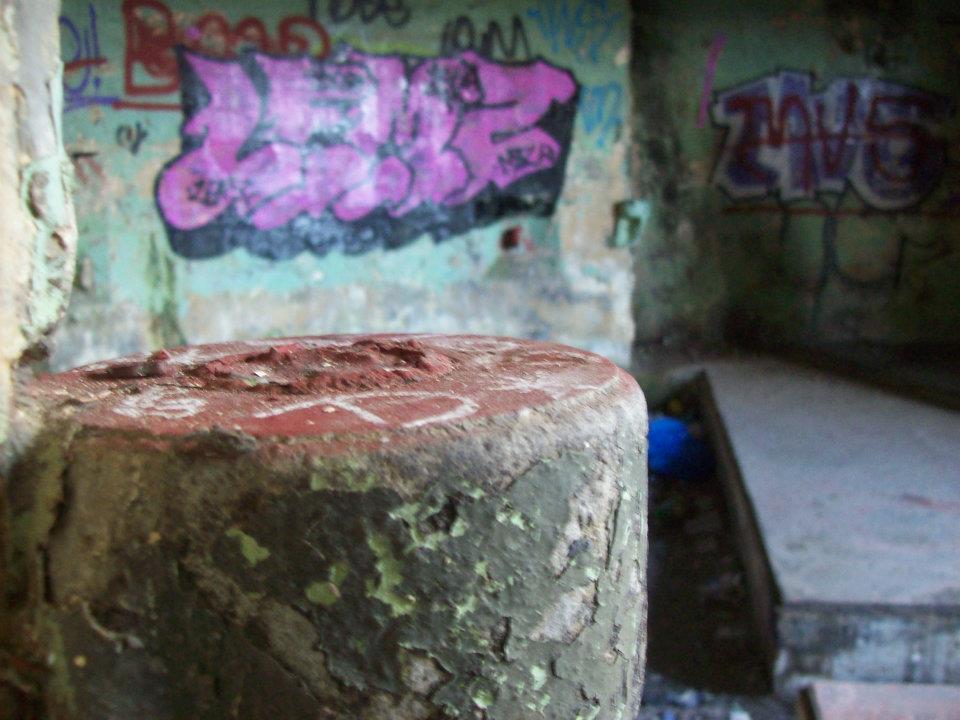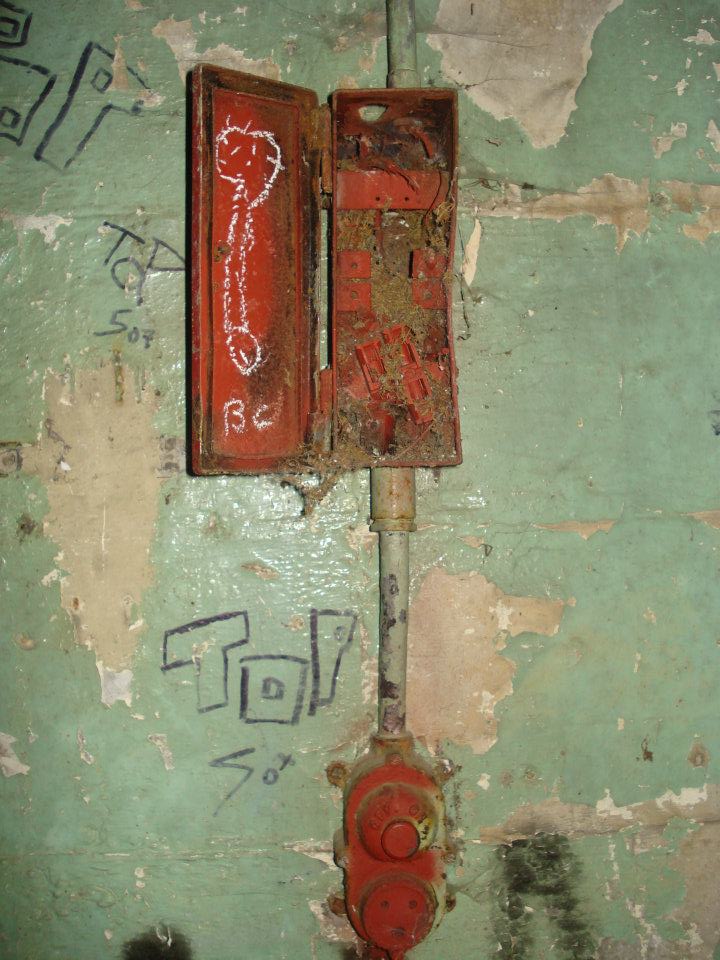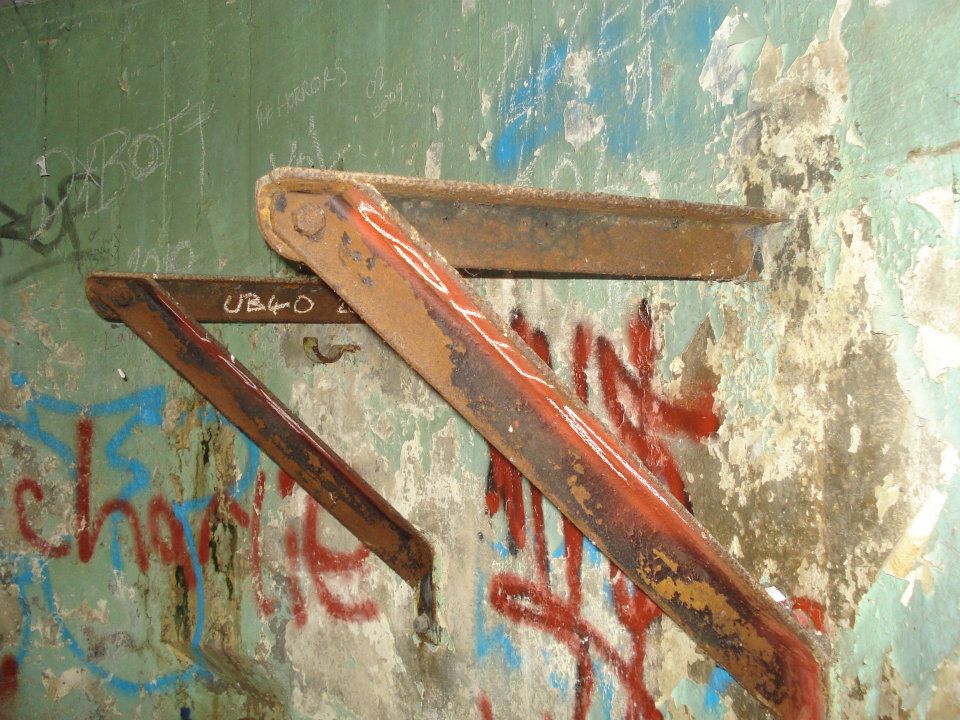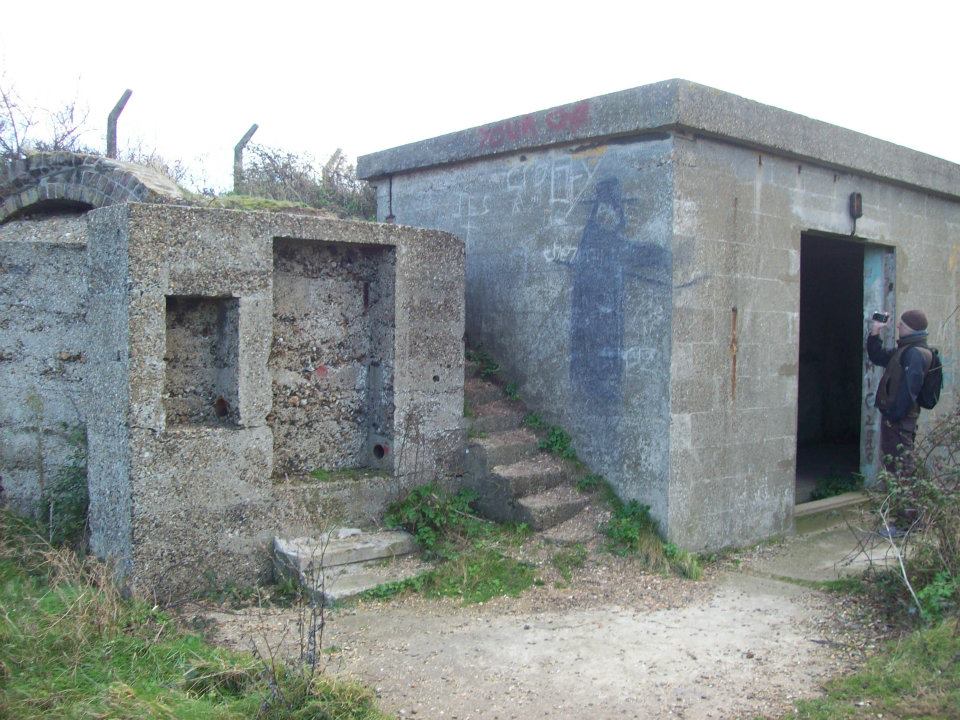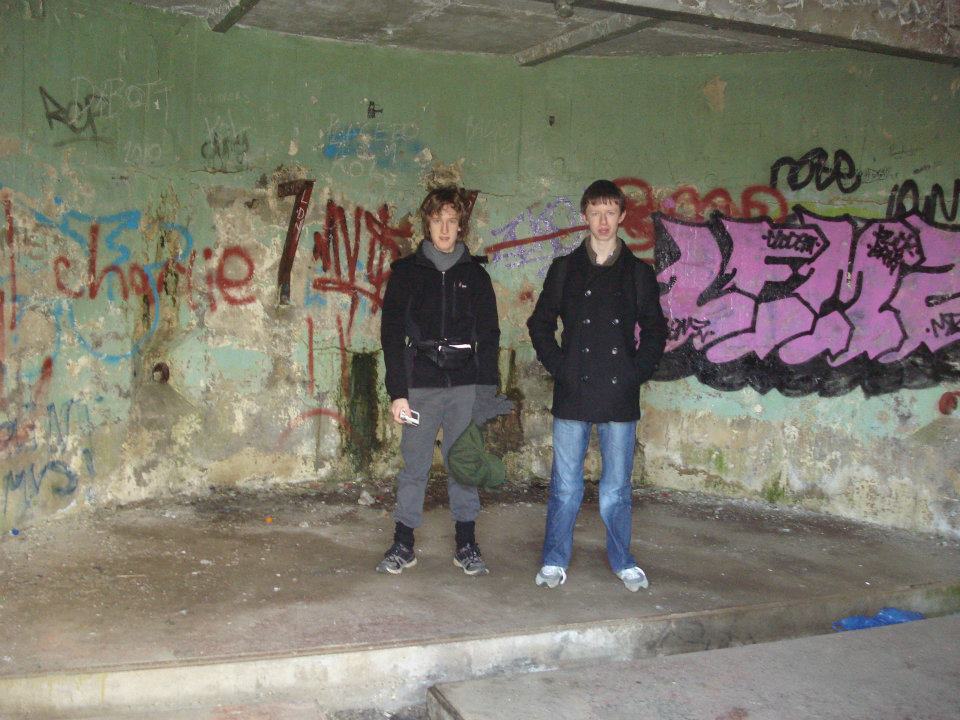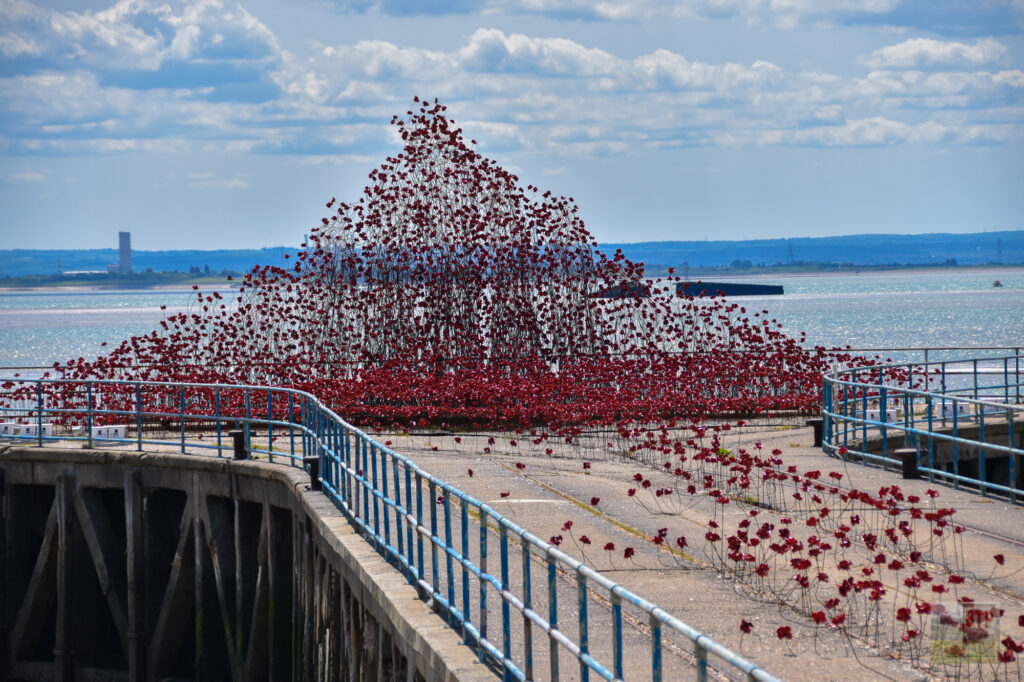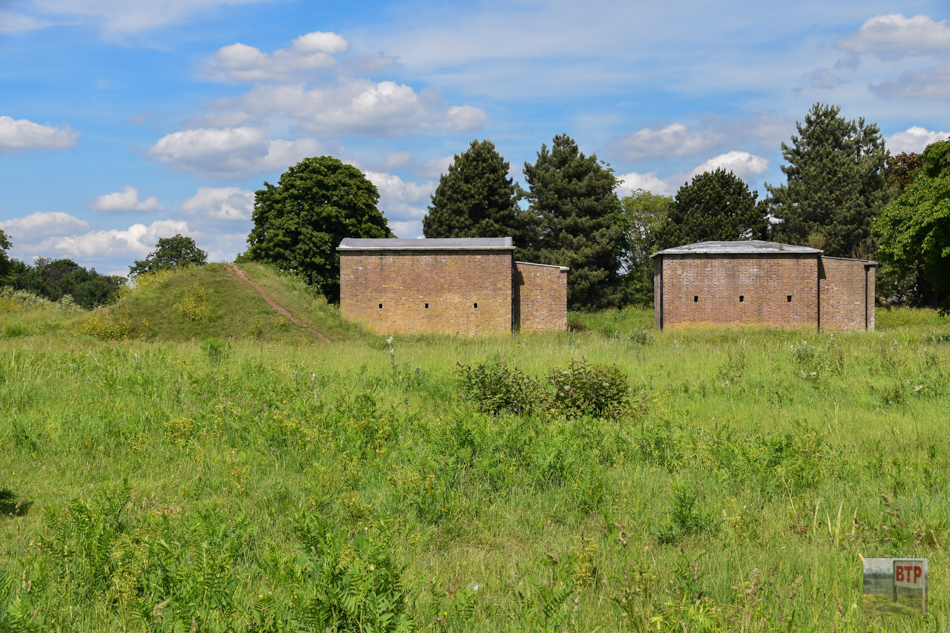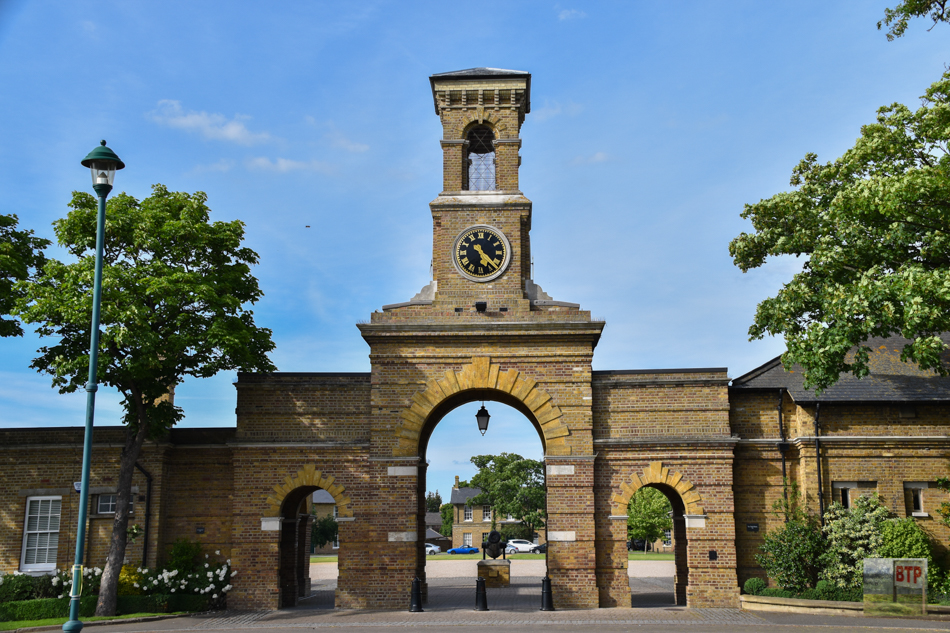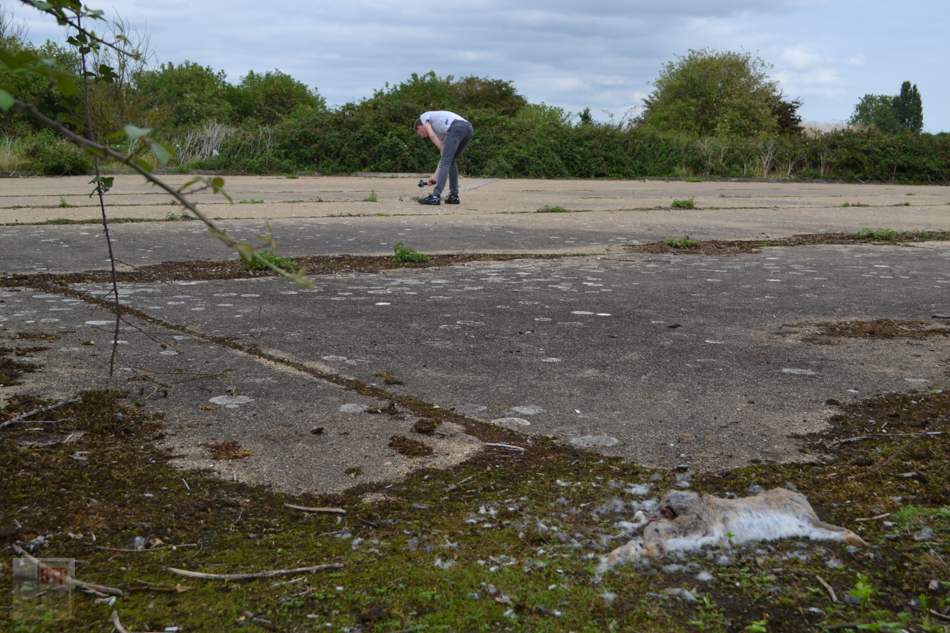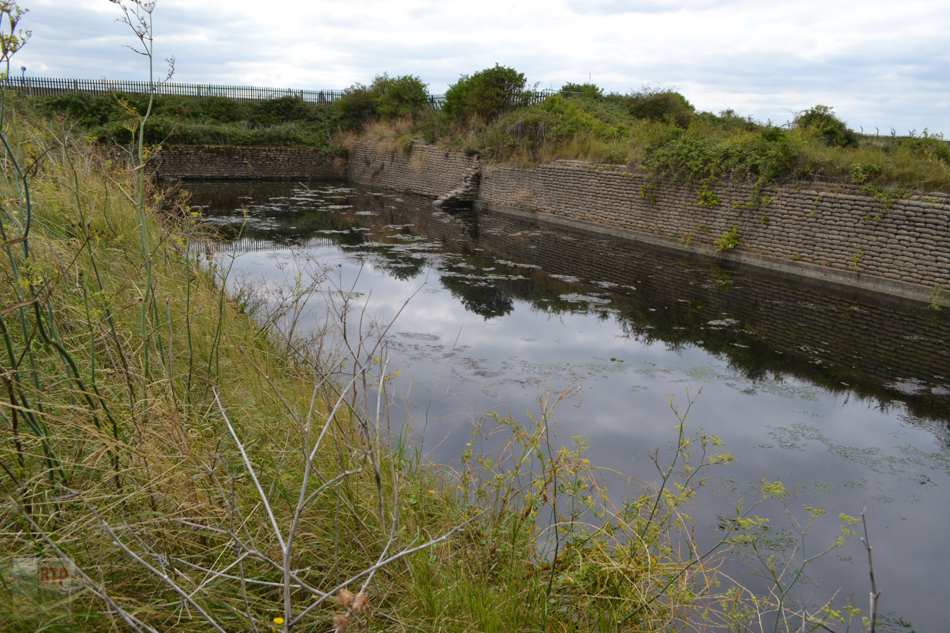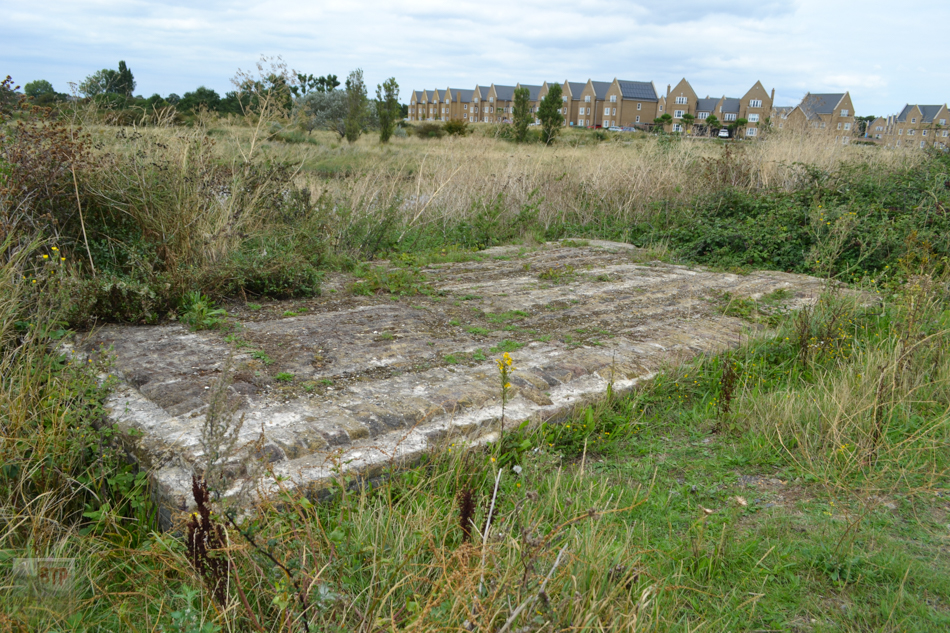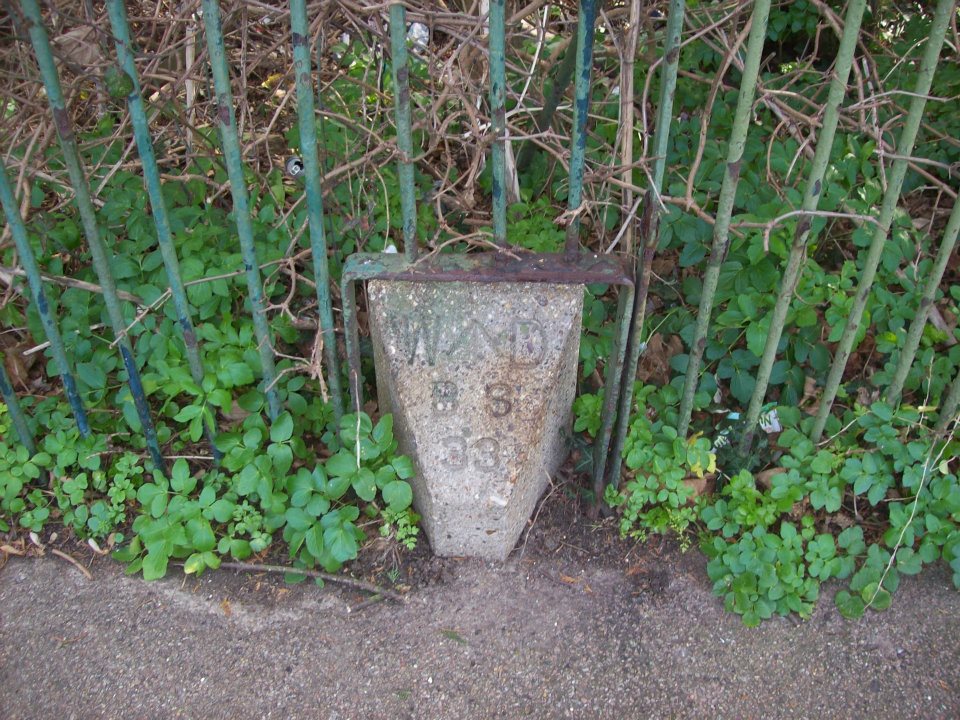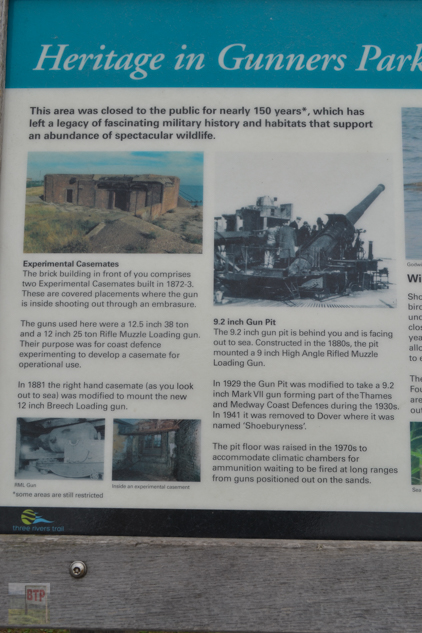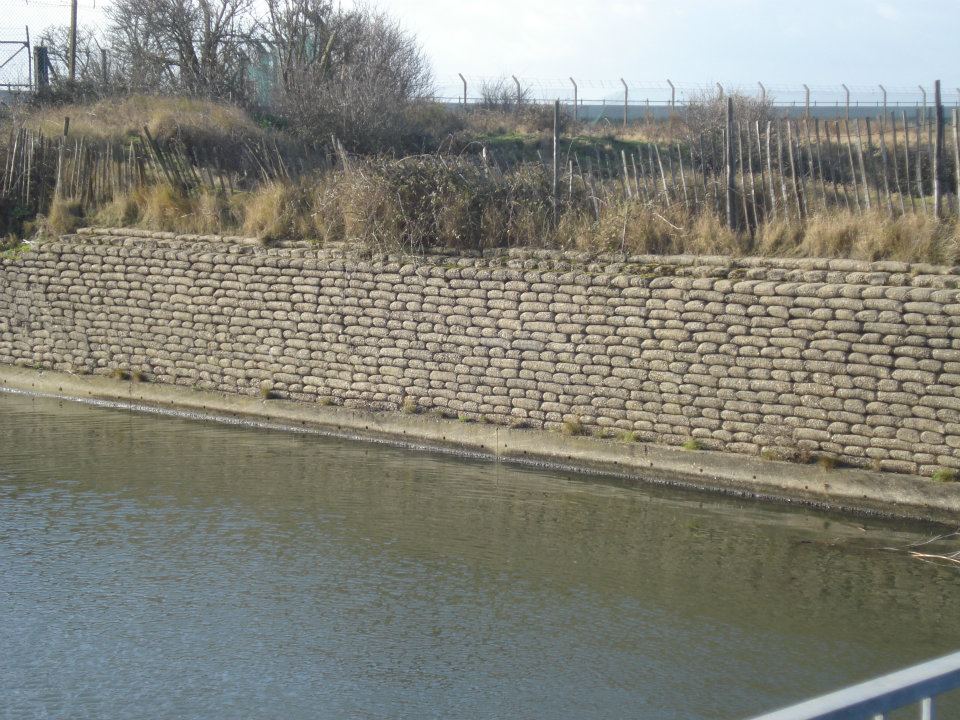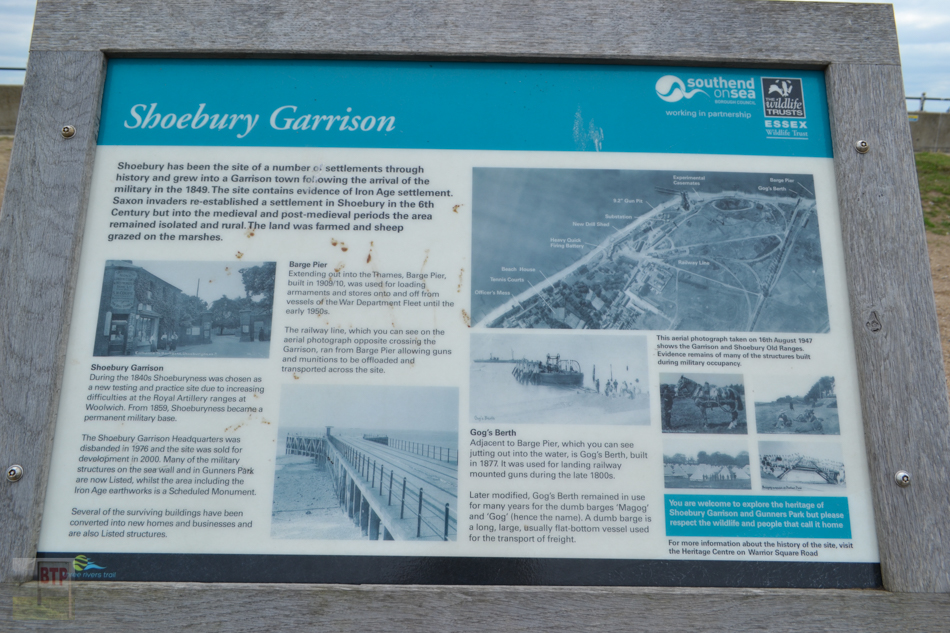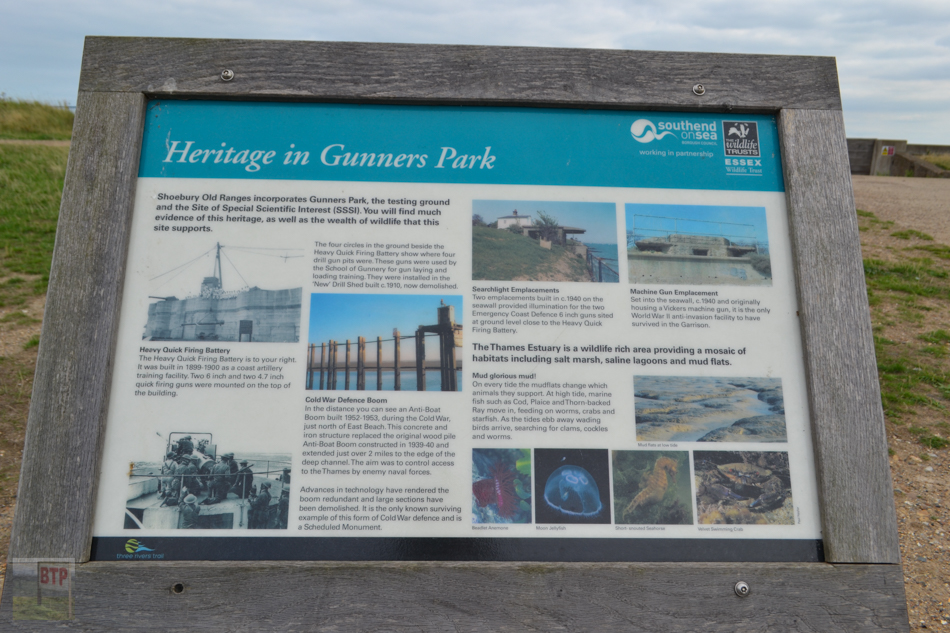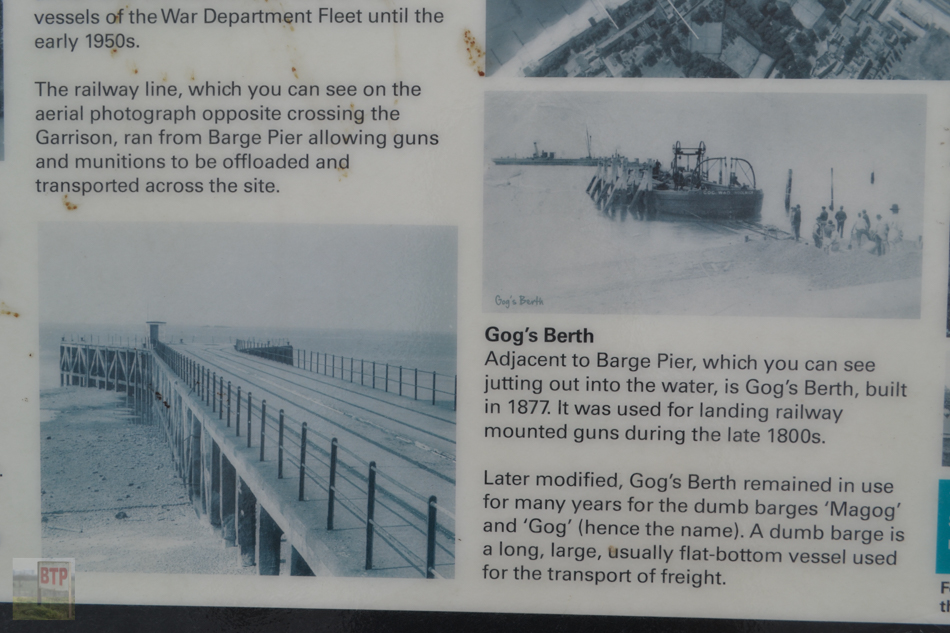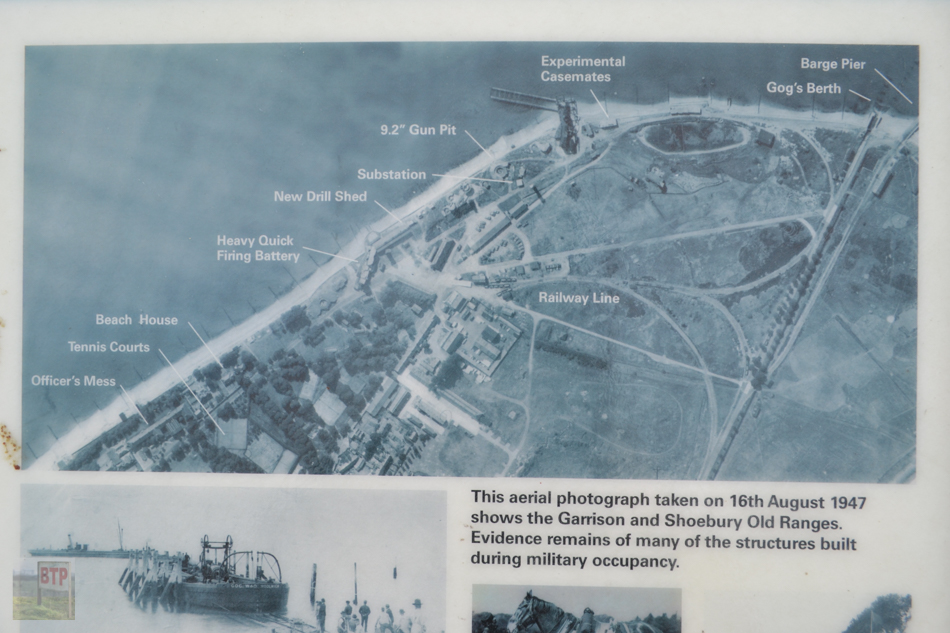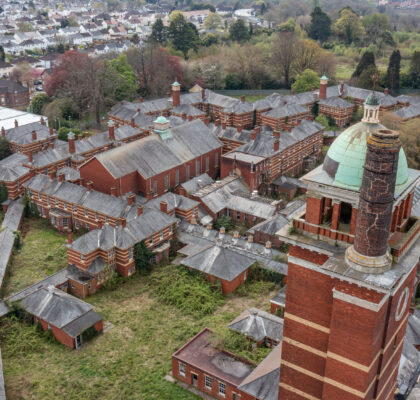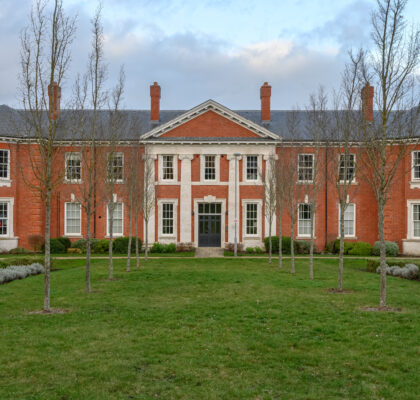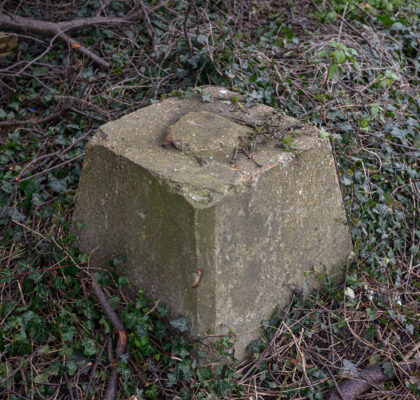The ranges at Shoeburyness have a long ever-changing history, from the 1840s until present day. The ‘old ranges’, now Gunners’ Park near the Garrison, were in heavy operational through the Victorian and Edwardian eras and wartime up until probably the early Cold War. These ranges also saw use as coastal defences in the Second World War, accompanied by a super-heavy railway gun. The ‘new ranges’ which extend beyond Shoebury East Beach to Foulness Island beginning use in the early-mid 20th century with vivid use in the Cold War and present day military experimentation.
Whilst the old ranges did have some defensive purpose during wartime, they were primarily intended for artillery training and development, as the new ranges continue to be used. Experimental casemates built in 1872/3, were adapted into the Light Quick Firing Battery twenty years later. The Heavy Quick Firing Battery (1898) also apparently adapted a previous structure.
Below, we will take a look through the various remains at what is now Gunners Park Nature Reserve – well worth a visit to see these impressive remains youself. The photographs were primarily taken by us in 2018 with some of our older images from 2011 which show later-inaccessible areas or changes.
Experimental Casemate
The Experimental Casemate was constructed around 1872-3 for use by the British School of Gunnery. It was modified into the Light Quick Firing Battery in 1893, and further modifications saw it rearmed for the Second World War. The structure is of brick and concrete. Two 12.5 inch 38 tonne Rifled Muzzle Loading guns were originally housed in the structure with one upgraded to a newer 12-inch Breech Loading gun, and reduced to one during WWII with a range finder position allocated to the left hand side of the building. Despite this, all the original mountings for the early guns were left in-situ and still survive, visible inside.
The bunker cannot be entered today due to being shuttered for its protection, but we managed to photograph it through this and during our 2011 visit when it was not yet sealed.
2011 Photographs:
Heavy Quick-Fire Battery
The most impressive structure within the old ranges site is the towering concrete Heavy Quick Firing Battery. This was built in 1898-1900, adapted from a smaller earlier structure, which according to Southend Timeline, the remains of are just visible as a dark stain on one end of the structure. The structure has one smooth front side and a somewhat scruffier rear with two ammunition hoist towers – the hoists remain inside despite it being firmly sealed. It would have housed two 6-inch and two 4-inch quick-firing guns for coastal defence on the roof – likely much more rapid and modern than the earlier Experimental Casemate. This was used into WWII, likely with modification and rearmament. An observation tower would have protruded from its top, visible in the old photograph below, but has been subsequently demolished.
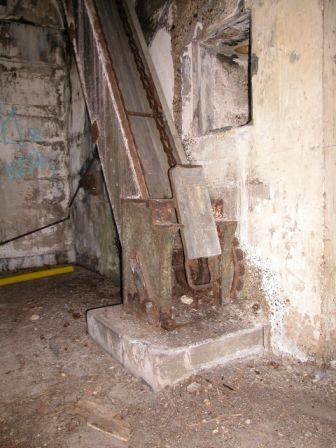
Early 2000s Shot of Shell Hoist 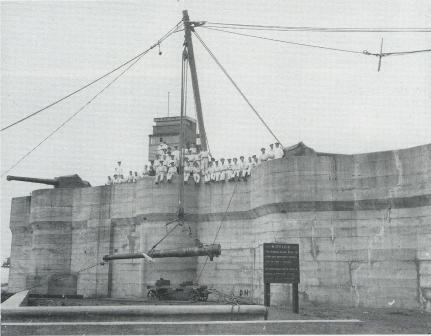
Probably Early 20thC
Small Gun Pits
Four small gun pits are visible next to the Heavy Quick-Fire Battery. These were sadly buried when the nature reserve was created, but their rims are still visible. Their age and purpose is unknown – please comment if you have greater knowledge.
9.2″ Gun Pit
This huge circular gun pit was constructed in the 1880s and mounted a 9-inch High Angle Rifled Muzzle Loading gun. This would have craned up on a ‘dissapearing’ Moncreiff carriage to fire over the pit out to sea – highly experimental at the time. The pit was modified to house a 9.2-inch MkVII gun in 1929, as part of the Thames and Medway’s interwar coastal defences. This was moved to Dover in 1941. It was possibly for this that the later structure adjoined to the west of the pit was added. The gun pit’s floor was resurfaced in the 1970s to accommodate climatic chambers; stores for ammunition waiting to be fired on modern guns out onto the sands. These alterations sadly have lessened its perceived value for protection. However, it remains safely secure within the park for now. The later structures added to the left of the pit are of interest in themselves, potentially having been added in the early Cold War.
2011 Photographs of the adjoining structure:
Firing Range Area
Part of the park is still visible as a probable small arms firing range, for testing handheld weapons. This fenced off region has a huge mound of earth at one end, likely a backstop of sand to stop projectiles continuing further. Winston Churchill is know to have tested small arms at Shoeburyness’ ranges himself, including the Sten submachine gun pictured below.
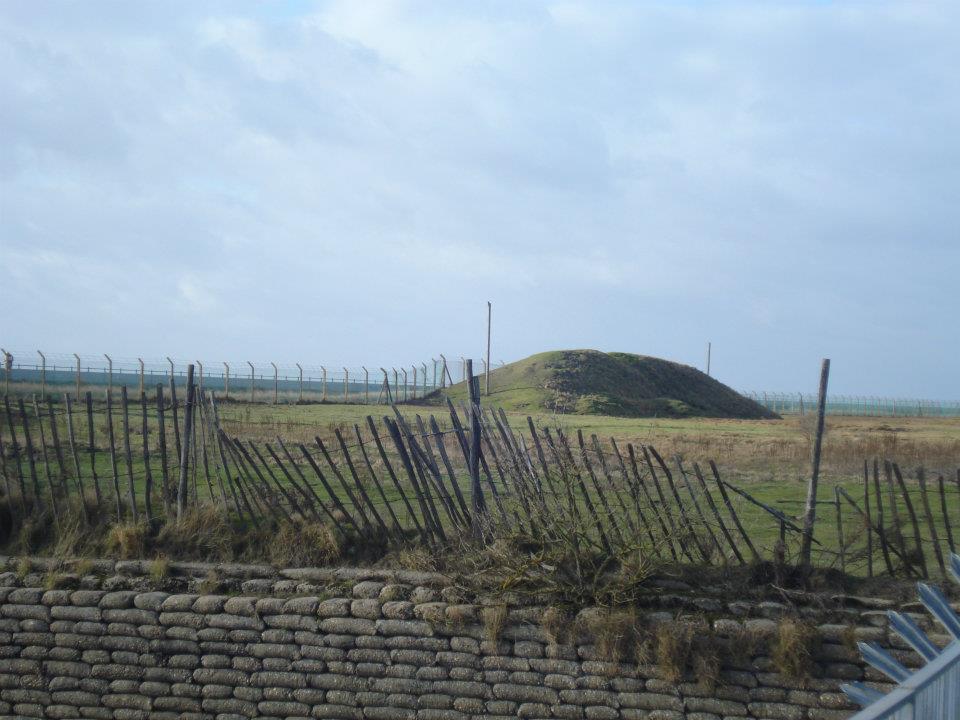
2011 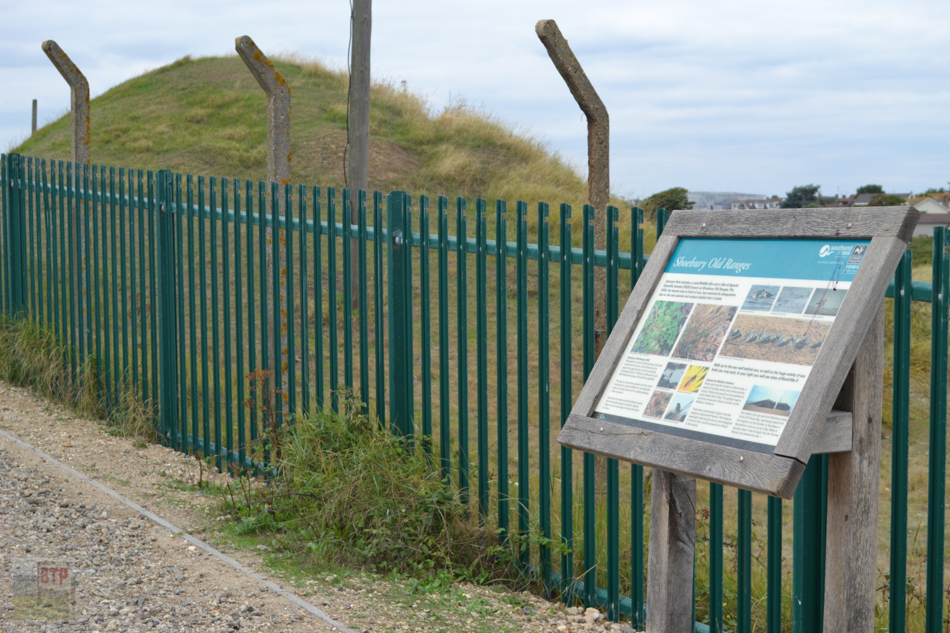
Barge Pier & Gogs Berth
A harbour area was built in 1877 along the coast at the western end of the old ranges, called ‘Gogs Berth’. This was built for two barges called “Gog” and “Magog”. One of the jobs the barges and the berth were used for was to bring 21-ton Infant Cannons down the River Thames from Woolwich Arsenal for testing at Shoebury.
The barge pier next to Gogs Berth was constructed around 1909-1910 and continued to be used for loading and unloading weapons and equipment to the War Department Fleet into the 1950s. It spans a short way into the Thames and as of the First World War Centenary houses the ‘Poppy Wave’ art installation. A narrow-gauge railway is visible upon the jetty and this would have connected it to much of the old ranges site, probably for the transportation of heavy equipment such as guns.
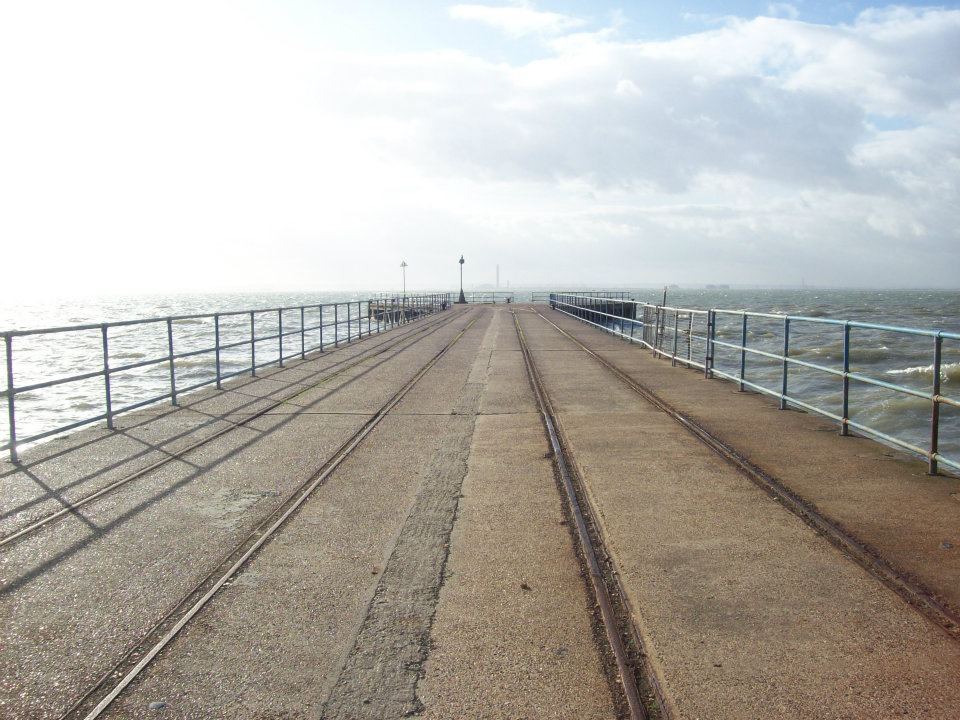
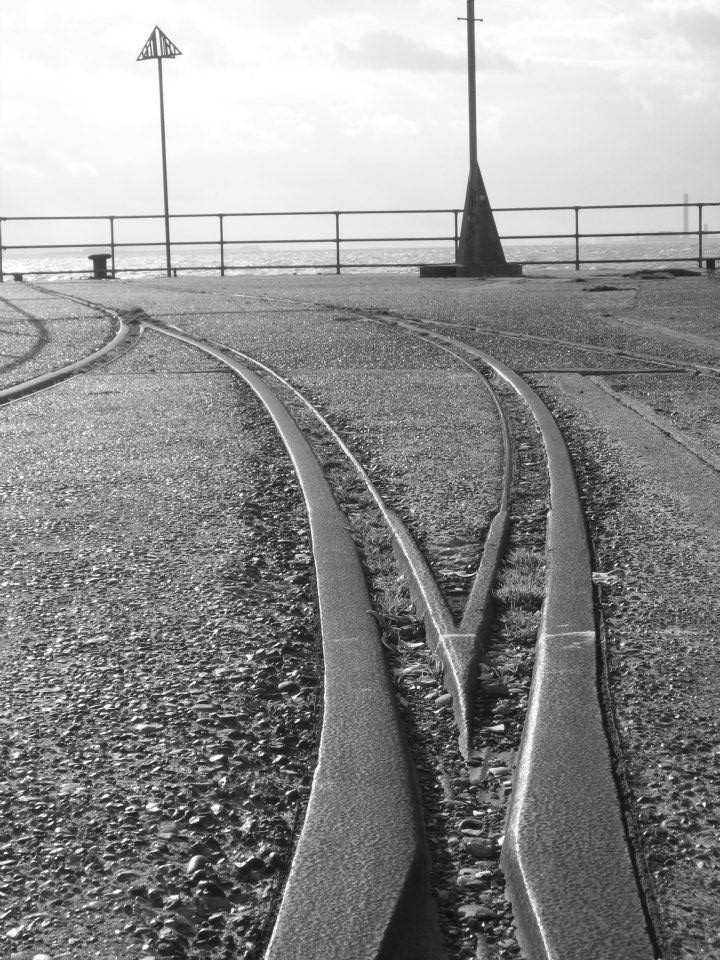
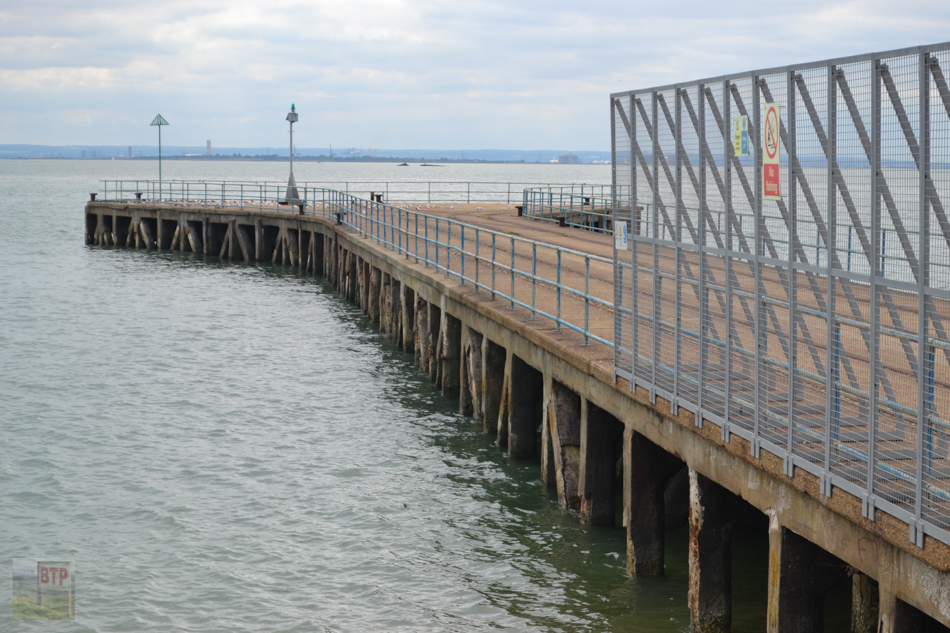
Barge Pier 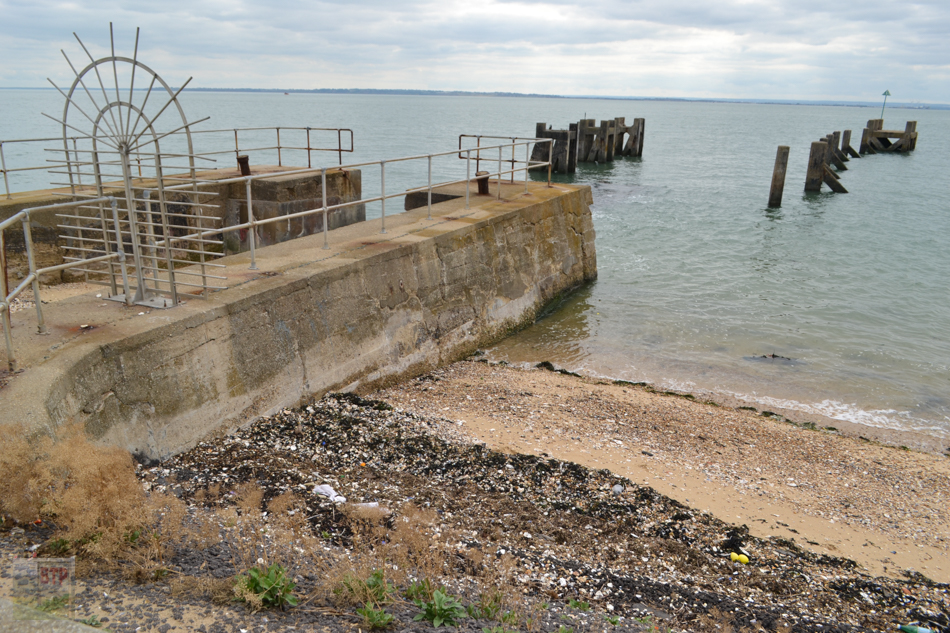
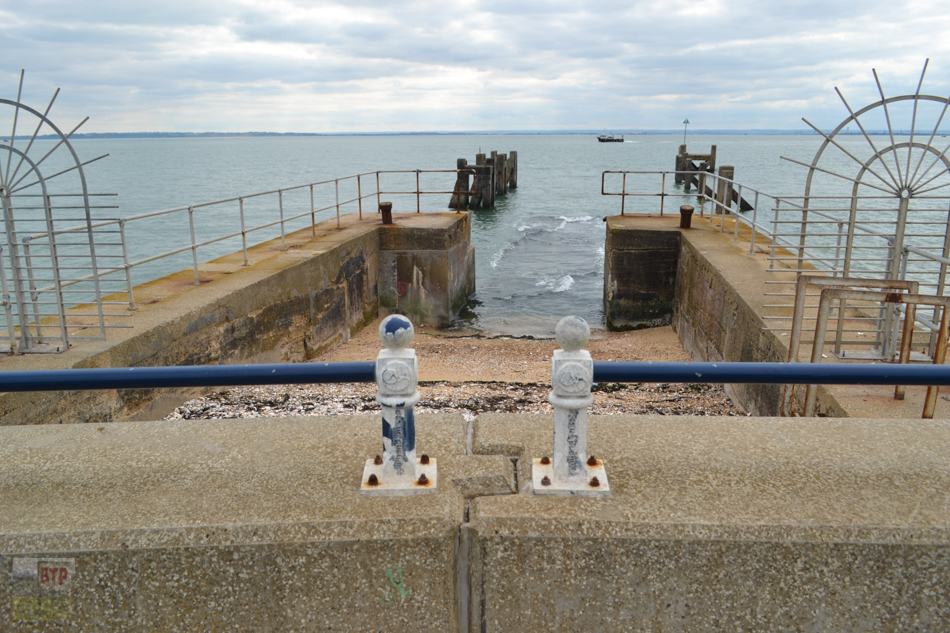
Gogs Berth
Other Features of the Area
Here are some images of other lesser features of the park remaining from the ranges, including a War Department marker along the perimeter, turning circle, and a concrete sandbagged sluice:
Sources:
http://www.southendtimeline.com/theoldranges.htm
https://historicengland.org.uk/listing/the-list/list-entry/1112693
http://www.ecastles.co.uk/shoebury.html
https://www.southend.gov.uk/downloads/file/1843/detailed-history-of-shoebury-garrison
https://www.victorianforts.co.uk/moncrieff.htm
This entry was posted in Location Report- Edwardian & First World War
- Military
- Public Land
- Shoebury & Wakering
- Shoeburyness Heritage
- Stuart Georgian and Victorian

